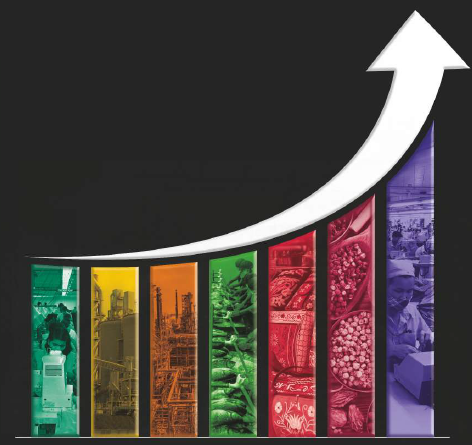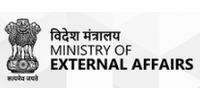About BIMSTEC
BIMSTEC represents a very important maritime geography. It is a key part of India's ocean policy and Indo Pacific strategies. 2022 marks the 25th year of inception of BIMSTEC and the three special areas that have been highlighted for policy action in recent times are
1) Poverty Eradication
2) Connectivity and
3) Promotion of Trade and Investment
Analysts feel, the real challenge of policies lies in their implementation and the key is to adopt a modest and practical approach to BIMSTEC cooperation.
This 3-day long business conclave, along with a BIMSTEC exhibition, is a forum to discuss priorities, opportunities, challenges and also for B2B, G2G and B2G interactions among BIMSTEC member nations - Bangladesh, Bhutan, India, Myanmar, Nepal, Sri Lanka, and Thailand.
Jun 13 - 15, 2023 GMT +05:30
Add to CalendarHyatt Regency Kolkata
Kolkata, West Bengal, India
Show on map
Components of BIMSTEC
Component –I
- Participation of BIMSTEC Union Ministers from BIMSTEC Countries along with the presence of the BIMSTEC Secretariat.
- Sessions on Trade Amongst BIMSTEC Countries - Opportunities and Barriers
- Investment in BIMSTEC Region : Challenges and Opportunities
- Sessions on *
- Textiles
- BFSI
- Agriculture
- North East & BIMSTEC,
- Healthcare
- Jewelry
- Education
- Infrastructure & Logistics and Connectivity
- WOMEN Session
- Tea
- Tourism
- Startups etc.
Kindly Note: Participation is subject to prior Registration only. To Register for Session of your choice please coordinate with concerned officer handling your registration. Registering for a day entitles you Access to other Sessions on same day. Access to other Sessions is subject to seating availability.
Component – II
- Participation of all the BIMSTEC Ambassadors and an exclusive Ambassadors Round Table and dedicated B2B and G2G meetings will be organized to discuss the cooperation among BIMSTEC Nations.
Component - III
- Exhibition wherein various companies from BIMSTEC countries along with local Indian Companies will participate and display/launch their products and will have regular buyers –Sellers meet.
- BIMSTEC BUSINESS CONCLAVE is a unique forum to establish new business contacts and it will play an important role in the development of your business and enhance mutual investment prospects between NE India and the BIMSTEC Member States.
Kindly Note: Participation is subject to prior Registration only. Registration for this Textile Session, entitles you Free Access to other Sessions on same day i.e. 15th June 2023. Access to other Sessions is subject to seating availability.
Type here the content of the page or click on some items in the Common Objects-section to add more images, titles and texts to your page
About Textile & Garment Forum
As a part of the BIMSTEC Business Conclave we are organizing Textile Session is being organized where entrepreneurs from the textile fraternity of the BIMSTEC countries will Participate, Discuss Business Opportunities, Challenges and Solutions and Possibilities of Business Tie Ups on the basis of market complementarities.
In addition to the Conference Sessions, a B2B meeting and an Exposition have also been planned for showcasing products and services.
Bangladesh: During the 2020-21 fiscal year, Bangladesh's apparel exports reached US$31.5 billion, up by 12.6% yoy, but was still 6.9% below the annual target of US$33.8 billion set by the Export Promotion Bureau (EPB) In the last seven years, Bangladesh's garment industry has increased its annual revenue from $19 billion to $34 billion—a 79% rise. This makes the country the second largest exporter of garments in the world, with the sector accounting for 80 percent of Bangladesh's total export earnings.
Bhutan: Revenue in the Apparel market amounts to US$105.00m in 2023. The market is expected to grow annually by 5.22% (CAGR 2023-2027). The market's largest segment is Women's Apparel with a market volume of US$48.30m in 2023. In the Apparel market, volume is expected to amount to 10.80m pieces by 2027. The Apparel market is expected to show a volume growth of 1.8% in 2024. A new collaboration between Bhutan and India will be exhibited in the field of fashion and textile heritage of the two countries. In an effort to encourage traditional textiles and weaving, both a forte of the two countries and to foster collaboration between the traditional textile artisans and designers, a textile presentation called Khadi-Thagzo is supposed to be held at Thimphu. The weaves of Bhutan are known for their vibrant colours, complex and meaningful patterns, and unique weaving techniques.
Myanmar: The labor-intensive apparel sector remained one of Myanmar's largest employers and accounted for more than 30% of the country's total exports in 2021 (UNComtrade, 2022).
Myanmar's garment sector on a Cutting, Making, and Packaging (CMP) basis has exported goods worth more than $3.7 billion in the first eight months of fiscal (FY) 2022- 2023, i.e., from April–November 2022. Exports of the country's manufacturing sector, which includes garments, added up to $7.89 billion during the period. While Myanmar's volume of exports from September–November 2022 decreased due to a drop in demand by foreign trade partners, garment exports rose in the April–August period, according to data released by the nation's ministry of commerce.
Nepal: Nepal's yarn industry has recently witnessed a surge in demands that has increased the business operations for the local handloom producers up to 60%. Producers have attributed the business bloom to the increasing orders coming from India after the phased reopening and resumption of economic activities post coronavirus lockdown.
Nepal's GDP and livelihood of the small scale textile weaving businesses largely depend on these handicrafts exports.
Sri Lanka: Throughout the years Sri Lankan apparel manufacturers & suppliers have gained a strong reputation worldwide for ethical manufacturing of high-quality apparels trusted by the iconic global fashion brands. Apparel Industry contributed 52% to the total export revenue of Sri Lanka in 2021. It is the leading foreign currency earner as well as the leading employer with 400,000 approx. direct employees and further 2 million indirect employments. Garment exports from Sri Lanka fell by 18.8 per cent in January 2023, standing at US $ 388.9 million as compared to US $ 478.9 million in the same period of the previous year, according to statistics released by the Central Bank of Sri Lanka.
Thailand: Thailand is one of the few countries in the world that provides the whole value chain of the textile industry from upstream, midstream to downstream. With over 4700 local textile producers, Thailand hosts a full range of activities across the entire textile value chain ranging from the production to fiber and fabric, all the way to the design, manufacturing and sales of apparel and functional textiles.
Tickets
- Registration Charges
- ₹750
- Invitee
Special Invitee
- ₹750






